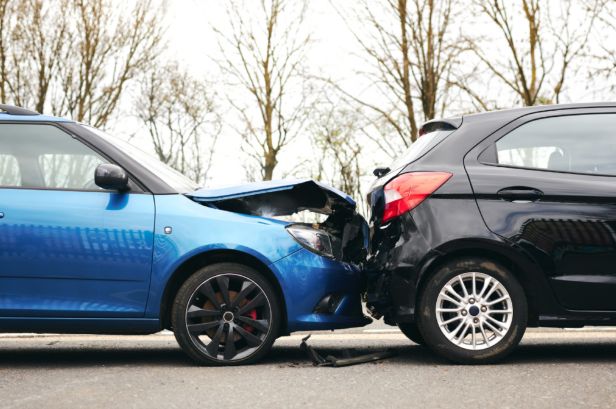Did you know that nearly one-third of all car accidents are rear-end collisions? These crashes happen in seconds but can leave lasting effects on your health, your car, and even your finances.
If you’ve ever had your car hit from behind, you understand the sudden, intense stress that accompanies it. With all that adrenaline pumping, it’s hard to think clearly about what to do next. That’s why it’s important to have some sort of plan to handle these situations in the back of your mind.
In this guide, we’ll walk you through five essential steps to take after a rear-end collision. From making sure you’re safe to dealing with insurance claims, you’ll learn how to protect yourself and handle the situation with confidence.
5 Steps to Follow After a Rear-End Collision
1. Check for Safety
The first step to take is to ensure your safety. Turn on your hazard lights immediately. If your vehicle is drivable, move your vehicle to the shoulder. The longer you remain in the active lanes, the greater the chances of being involved in another collision.
Once you’re on the shoulder of the road, check yourself and your passengers for injuries. While you may feel fine, neck injuries and back injuries often only surface hours later. According to the National Highway Traffic Safety Administration (NHTSA), whiplash is by far the most common injury sustained during a rear-ender collision.
If anyone has sustained an injury, please call 911 immediately. You may be legally required to call emergency services for injuries in many states. For example, California Vehicle Code §20001 states drivers must stop and report accidents which cause injury or death.
2. Call Police
In most states, the law requires you to report an accident that causes injury, death, or property damage requiring a police report. Even if the damage is minor, it is best to have a police report for insurance purposes later on.
When the officer arrives, give clear, factual details. Do not speculate or admit fault. The report will include the location, time, drivers involved, and witness statements. You should ask the officer about getting a copy of the report for your records as it will be significant evidence.
If police cannot come, in some states you may file an accident report online or at a local police station. For example, in New York, a driver must file a “crash report” (MV-104) within 10 days of a crash if the accident causes more than $1,000.00 in property damage.
3. Exchange Information
Swap information with the other driver. When exchanging information, you should include:
- Full name and contact information
- Driver’s License number
- License plate number
- Insurance company and policy number
- Make, model, and color of vehicle
Be polite, but limit the conversation and do not discuss the merits of the crash. Do not argue or accept blame. Liability is left to the insurance companies.
If there were witnesses, make sure to get their names and contact information. Third-party accounts are very helpful and will be needed if you become involved in a dispute later on.
4. Document the Scene
Take pictures on your phone of as much as you can, and make videos. Focus on:
- Damage to both vehicles
- Street signs and traffic lights
- Skid marks or debris
- What the weather and road conditions were like
- Any visible injuries
Photos and videos will be proof of your record. If you have a dash cam, be sure to save any footage and back it up.
As soon as possible, write down everything that you can remember. Include how the crash happened, what speed you were driving, and what you were feeling. Thinking about the details will be helpful information when you speak to your insurance company or lawyer.
5. Contact Your Insurance
Contact your insurance company as soon as you can. Most policies require prompt notice. Give them the facts—where the accident happened, when it happened, and how it happened. Provide the police report number and the contact information for the other driver.
Inquire about your coverage. For example, liability insurance pays for the other driver’s damages if you are found to have caused the accident. Collision coverage that you may have will be used to assist in the cost of repairs to your vehicle. And, if the other driver caused the accident and had insurance, then their insurance coverage should pay for the accident.
Keep detailed records of all calls, emails, and letters. If your car is taken to a repair shop, keep receipts and estimates from the repair shop.
Key Takeaways
A rear-end accident can create stress and confusion, but understanding the steps to take can help you remain calm.
- Check for safety and injuries.
- Call the police to secure your report.
- Exchange information with the other driver.
- Document the scene with pictures and notes.
- Make immediate contact with your insurance company.
Taking these actions will protect your health and finances, as well as your rights under the law.

